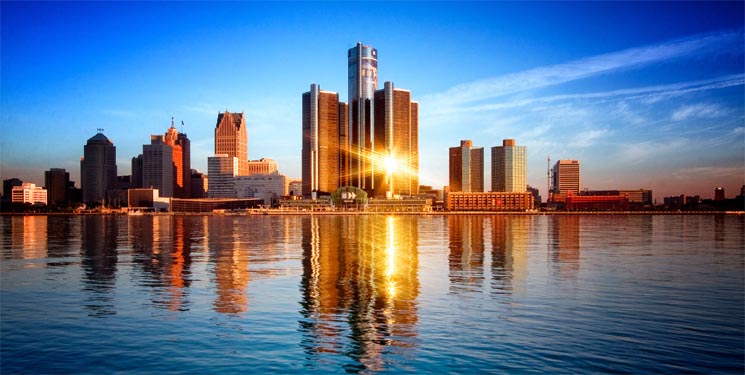In the days since Detroit declared bankruptcy and in the days coming many have and will continue to ask how the city could have arrived at this point? For many Detroiters the question is not how we got here, but how the city staved off bankruptcy for as long as it did. While this comes as little surprise to any longtime observer of the city, it is still no less of a painful time. Seeing a city you love make such dubious history as the first city of its size to file for bankruptcy still stings. Those taking merely a superficial glance will blame Democratic leadership; those left holding the political hot potato which had been Detroit political office the past 50 plus years, corruption or union involvement. That of course only tells part of a much more complicated story. It belies the fact that Detroit enjoyed continuous population growth for nearly 130 years from its initial years in the early 19th century to the 1950 swelling to over 1.8 million people before it lost residents for the first time under Republican leadership. The city hasn’t added more resident than it’s lost since. Of course finger pointing at this stage is about as productive as re-arranging the deck chairs on a sinking Titanic.
Far more useful is a discussion centered on solutions. The city’s plight has reinvigorated such discussions by many of the city’s community stakeholders in the business, philanthropic and government sectors. A three-pronged approach would be most productive. First, a comprehensive examination of the social, economic, demographic and political factors which combined to cause a 60 year Katrina-type perfect storm which has gradually laid waste to so many of municipal institutions from education, to basic services and public safety in a once fully functioning and bustling city. Second, a short-term strategy of financial and municipal restructuring as it pertains to the delivery structures of basic services from fire, to schools, to emergency and hospital services, and police among many others.
Third and just as important if not more as the last point is an innovative approach to urban planning and development which starts with the city’s core. If Detroit is to rebuild, it must start with one of the driving reasons why people move to cities in the first place, industry and employment. In its early Detroit was primarily a trading post for fur and other goods, it would gain international renown for its manufacturing prowess during the last century. Now it must identify other key industrial specialties, to build and attract business around. One such significant effort among many others; is spearheaded by Quicken Loans head Dan Gilbert and is centered around technology, attracting the likes of Google and Twitter and countless other small startups, is already underway in a once bustling downtown corridor anchored by the old Hudson’s department store along Woodward Avenue. Any major development strategies must be first linked to Detroit’s neighborhoods, creating pathways to employment through community organizations as well as to suburban and regional cooperation, a reality which has eluded the Detroit metro area in its truest sense for several decades.
The Detroit of today isn’t the same city that greeted my grandfather, who when he arrived in the Detroit in the prior in the years preceding World War II, found a bustling city full of opportunity for those who were industrious. He would find a city full of opportunity yet still teeming with the reminders from the deep south as the city’s second African-American bus driver he would endure racist taunts as riders would disembark the bus when he boarded for his daily run. He would ignore such daily insults and go on to become a successful entrepreneur of several companies within the city.
Nor is it the same city that my father experienced as a Ford auto worker in the 1960’s who experienced the booming years of a bustling Motown sound as well as the result of years of pent-up anger and frustration during the 1967 civil unrest. The Detroit of today isn’t even the Detroit I recall in my youth where the summers at spent at Belle Isle were warm but facing growing violence across the city’s neighborhoods as crack-cocaine made its presence felt during the 1980’s.
Detroit often synonymous with innovation and ingenuity which gave us the American Automobile later transitioned the machinery which did so into the arsenal of Democracy, spurred urban freeways, developed the first suburban mall, gave the world the Motown sound will once again have to reinvent itself. Over 200 years ago, shortly after the fire of 1805 destroyed most of Detroit, one of the city’s leaders, Father Gabriel Richard penned what would become and remain the city’s motto, “We hope for better days, she will arise from the ashes.” Those words were never more true than they are today, and reflect the sentiments not only of this Detroiter but countless others across the city from business and civic leaders, to faith-based and community organizations to many of the city’s residents who resiliently continue to live and work in a city which has seen better days and will see better days ahead.
